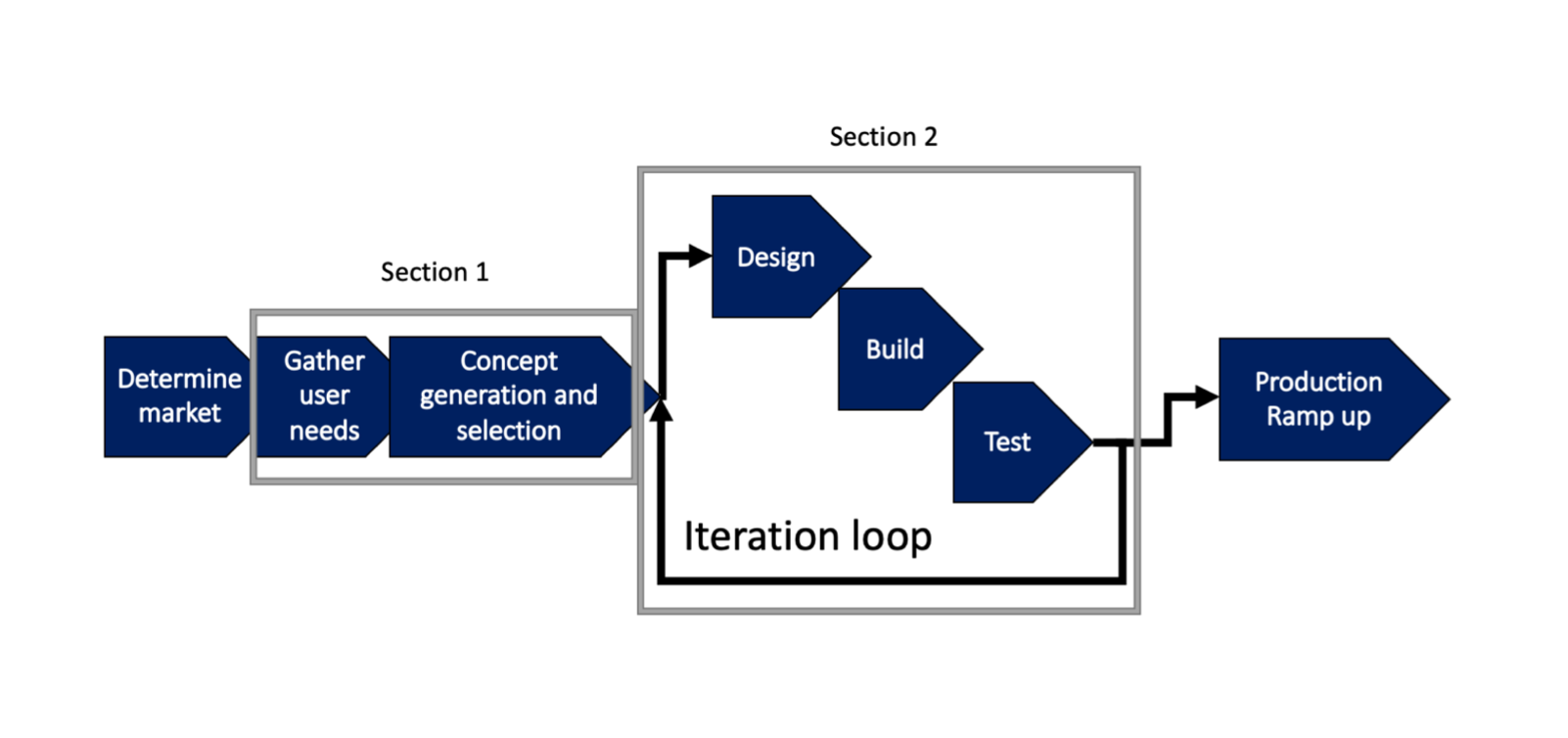What you will learn
Overview
Before diving into the specifics of product design, we want to define what we will be covering. The first distinction we want to make is between research and development. Research is a highly unpredictable, but systematic process of discovery that deals with novel technologies with unstructured methods. Development is a more predictable planned process to create novel products with mostly known technologies using structured methods. Our focus in the Design for Assistive Technology course will be on development not research.
Also there is a distinction to make about whether the product we are developing is a market pull or technology push product. Market-pull products are developed after a market opportunity has been identified and is designed to meet customer needs. For technology-push products, development starts with a new technology and finds a market afterward. Our focus will be on market-pull technology.
The reason for this focus is that we will be designing to a specific customer need. In this case a person with a disability will have a problem that can be solved with technology and therefore our customer base and therefore market are defined as that disability community.
Product Development Process Flows
There are many process flows that have been used by teams to design new products. One determining factor on what development process to choose is whether your project is mainly hardware or software. For software, different development processes, for example, Agile have been shown to be very effective. For hardware the processes, it is more difficult, and variations on a general process flow is used.
The general process flow for hardware product development is shown. We will be covering gathering user preferences, concept generation and selection in Section 1. We will be covering prototyping loops with components of design, build, test in Section 2.
